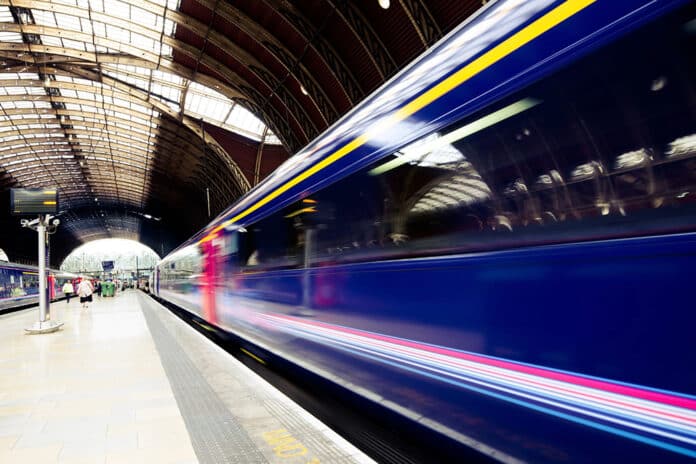Jon Bishop who leads Arcadis’ Stations Hub, a virtual team of professionals who are passionate about stations, discusses the commercialisation of stations and the importance to build-in flexibility and deliver a place.
Before the pandemic station retail was profitable, generated by passenger footfall volume that drove a high percentage of purchases on a grab and go format.
Normal footfall dropping by 85% during recurring lockdowns is unsustainable for any retailers operating in stations, however, once footfall increased during September’20 with reduced restrictions, it generated an uplift to 60% allowing retailers to trade, delivering a viable business proposition.
How will the current station retail landscape change post pandemic? The prediction is that commuter working patterns will alter from the frenetic five day a week office routine, to partial remote working, providing potential for greater personal time and flexibility.
We know the power of on-line verses off-line retailing has been accelerated and this trend is set to continue, so the survival rate for retailers will rely on their ability to adapt to a new immerging world of consumer preferences, convenience and loyalty.
In a transient station environment, every operator will now need to utilise as many tools at their disposal as possible to generate sales, derived from a deeper dive into consumer analysis, understanding the most effect way of reaching customers and not relying on passing footfall.
Convenience will continue to play its part, but investment in the use of technology will increase sales on numerous levels, from the use of Apps placing orders for collections, to booking use of facilities or services, emerging in the station environment.
Station coffee shops and street furniture used as temporary workstations offering limited unkept facilities, lack of privacy and potential for cyber security beaches, now need to change. Opportunities to convert stations into places that consumers want to engage for more than just travel are required, with spaces converted into a variety of uses that are secure, comfortable, entertaining, and deliver improved privacy.
Greater collaboration between train operators and their station tenants, would drive increased spend in creating places that will be valued and utilised by consumers.
Freight, a feature of stations could be extended with a modern approach. With an offer similar to Amazon’s Parcel lockers, a “click & collect” service could be provided. Addressing security concerns in stations, these facilities would be staffed, providing both national and international delivery services with repackaging and returns facilities. An extension of this environment could provide changing room facilities and brand promotional areas for on-the-spot transactions.
Finland’s state-owned postal service Posti, has opened a new “click and collect” concept called Box in Helsinki offering this service, whilst BIG a leader in Israel’s open air shopping centres, has opened BIG+ Click & Collect at one of its centres, providing a value-added offer that fits 21st Century e-commerce.
Converting space to flexible use, will deliver improved consumer engagement. Creating comfortable environments and use of screen technology, the ability for various uses could be achieved from brand promotions, to lifestyle choices such as aerobic or yoga lessons. Stations provide an excellent opportunity to host meetings, conferences or collaborative working, using space that could be rented at a mainline station.
Department stores, car dealers and retail banks are also seeking options to promote transactions using smaller retail spaces, staffed to aid customers in ordering their products online. Why not order a sofa or buy a car at a station?
Creating retail serviced units offering short term flexible leases for start-up businesses is another option. This “plug and play’ approach is not new, but provides a completed unit leaving a business to erect a sign, bring in fixtures and stock, then trade. Station operators can further collaborate with full management services in supporting other requirements such as transactions and marketing.
Turnstile connected to New York’s St-Columbus Circle Station is an extension of this thinking, with a subterranean subway market connecting 57th and 58th Street. Brands can be further supported with marketing, fixtures and paying less rent based on use of shared spaces. This is a collaborative and innovative destination, exceeding typical footfall within a subway.
Footfall is also encouraged by tourist attractions. There is always a queue at Kings Cross Station’s Platform 9 ¾ and the Harry Potter Souvenir shop. London Bridge hosts the annual Landscape Photographer of the Year Competition and a WWII Spitfire for several weeks during the 75th Anniversary of D-Day. Wemyss Bay Station on the Firth of Clyde attracts thousands of visitors a month with its stunning location, Edwardian architecture, station gardens and seasonal planting.
Longer term considerations could include possible conversion of existing office space, such as Network Rail’s offices at Waterloo, or disused retail units such as the ex-John Lewis unit at Birmingham New Street, into residential premises, tourism hotels or holiday lets.
Stations that build-in flexibility and deliver a place, rather than a transient space, meeting consumer desires as a destination, will achieve the success criteria of the future.
– Arcadis recently announced it had joined forces with Linxon and SSE Contracting, to power up a greener and more effective railway, delivering the HV solution as one.
Photo credit: Getty Images







































 0113 2082620
0113 2082620 info@railbusinessdaily.com
info@railbusinessdaily.com 15 Mariner Court, Wakefield WF4 3FL
15 Mariner Court, Wakefield WF4 3FL

